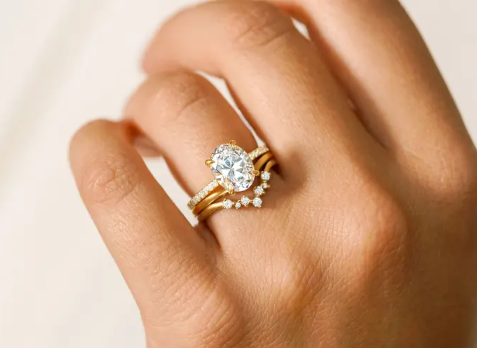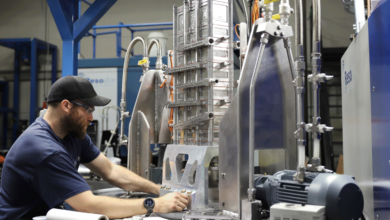How Does Ring Design Vary Across Different Eras and Styles?

Ring design has transformed dramatically throughout history, shaped by cultural shifts, artistic movements, and technological advances. From ornate vintage pieces to clean contemporary styles, the aesthetics of rings mirror the tastes and values of each era. This evolution has contributed to today’s wide variety of options, especially for those in search of unique engagement rings that reflect personal meaning, history, or style.
Ancient and Classical Eras: Simplicity and Symbolism
Ring design in ancient civilizations prioritized symbolism over extravagance. In ancient Egypt, rings were crafted from simple materials like bone, ivory, and reeds before transitioning to gold. The circular shape symbolized eternity, a concept still central to engagement rings today.
The Greeks and Romans further developed ring-making, incorporating more durable materials like iron, bronze, and gold. They engraved rings with images of gods, laurel wreaths, and lovers’ initials, establishing the tradition of personalized adornment. These early rings, though minimalistic, laid the foundation for modern unique engagement rings that emphasize intimate, symbolic detail.
The Middle Ages: Function and Faith
During the medieval period, rings became more complex in form and function. Signet rings served both as identification and as seals, while religious motifs and inscriptions adorned pieces worn by clergy and nobility. Rings often featured gemstones believed to possess spiritual or protective powers.
Marriage rings during this era were often made of gold and included inscriptions in Latin or French. These early romantic gestures influenced the creation of unique engagement rings that include meaningful messages or design elements drawn from spiritual or historical traditions.
The Renaissance: A Fusion of Art and Romance
The Renaissance ushered in a new appreciation for beauty and craftsmanship. Rings from this time featured intricate engraving, enamel work, and detailed metal designs. Jewelry became a medium for artistic expression, inspired by nature, mythology, and humanist ideals.
Gemstones became more prominent and were often combined in elaborate settings. Lovers began exchanging posy rings—bands inscribed with poetic messages. The creativity and emotional resonance of Renaissance rings serve as inspiration for modern couples designing unique engagement rings that reflect love through artistry and symbolism.
The Georgian and Victorian Eras: Sentiment and Style
The Georgian era (1714–1837) emphasized hand-crafted designs. Rings were ornate and symmetrical, featuring motifs like bows, leaves, and flowers. Colored stones such as garnet, turquoise, and amethyst were popular. Georgian rings are rare today but highly valued for their antique charm.
During the Victorian era (1837–1901), Queen Victoria’s own romantic life had a major influence on jewelry trends. Sentimentality flourished. Rings featured hearts, lockets, and acrostic gemstone arrangements where the first letter of each stone spelled a word—like “dearest” using diamond, emerald, amethyst, ruby, emerald, sapphire, and topaz.
Many of today’s unique engagement rings borrow from Victorian styles, infusing them with personal narratives and vintage flair.
Edwardian and Art Nouveau: Delicacy and Nature
The Edwardian era (1901–1915) emphasized elegance and refinement. Platinum became the metal of choice, allowing for delicate filigree work and lace-like designs. Diamonds and pearls adorned rings inspired by ribbons, bows, and floral motifs.
Art Nouveau, overlapping slightly with Edwardian tastes, celebrated organic shapes, flowing lines, and natural forms. It featured soft curves, enamel work, and often focused on feminine beauty. These elements have resurfaced in modern unique engagement rings that blend timeless elegance with expressive, free-form style.
Art Deco Era: Bold Geometry and Modernism
The Art Deco movement (1920s–1930s) responded to modernism and urban sophistication. Designs embraced bold, geometric shapes, clean lines, and symmetry. White metals like platinum and white gold dominated, while diamonds were often paired with contrasting gemstones such as onyx, sapphire, and emerald.
The strong visual identity of Art Deco remains popular among those seeking unique engagement rings with a sense of strength, structure, and vintage glamour. These rings convey confidence and timeless appeal.
Mid-Century to Retro: Simplicity and Innovation
In the 1940s and 1950s, ring design turned toward simplicity and practicality. The classic solitaire diamond ring rose to prominence, propelled by clever advertising campaigns. Bands became thinner, and the focus shifted to showcasing a single stone.
The Retro era saw a return to boldness, with oversized settings, multi-stone arrangements, and yellow or rose gold. These decades encouraged experimentation, paving the way for today’s unique engagement rings, which often blend old and new to create unexpected designs.
See Also: Techoelitecom: Exploring the Tech Elite
Contemporary and Modern Styles: Personalization and Ethics
Today, ring design is more diverse than ever. Styles range from ultra-minimalist to extravagantly ornate, with endless customization options. Many couples now seek unique engagement rings that reflect their values—such as sustainability, ethical sourcing, or personal symbolism.
Modern materials like lab-grown diamonds and recycled metals are commonly used. Asymmetrical settings, unconventional stone shapes, and mixed-metal bands reflect an openness to innovation. Custom engraving, hidden details, and meaningful motifs make modern rings deeply personal.
Designers now create rings that fuse influences from multiple eras, allowing individuals to choose elements that speak to their identity and love story. This era values self-expression above all, making it the perfect time to design a one-of-a-kind ring.
Conclusion
The evolution of ring design across eras reveals much about the values and aesthetics of different times. From ancient symbols of eternity to today’s ethically crafted custom rings, every style tells a story. These shifts have given rise to a wide array of unique engagement rings that blend historical elegance, personal meaning, and modern innovation. By understanding the rich design heritage of rings, today’s couples can choose a piece that honors the past while celebrating their own distinct love.




